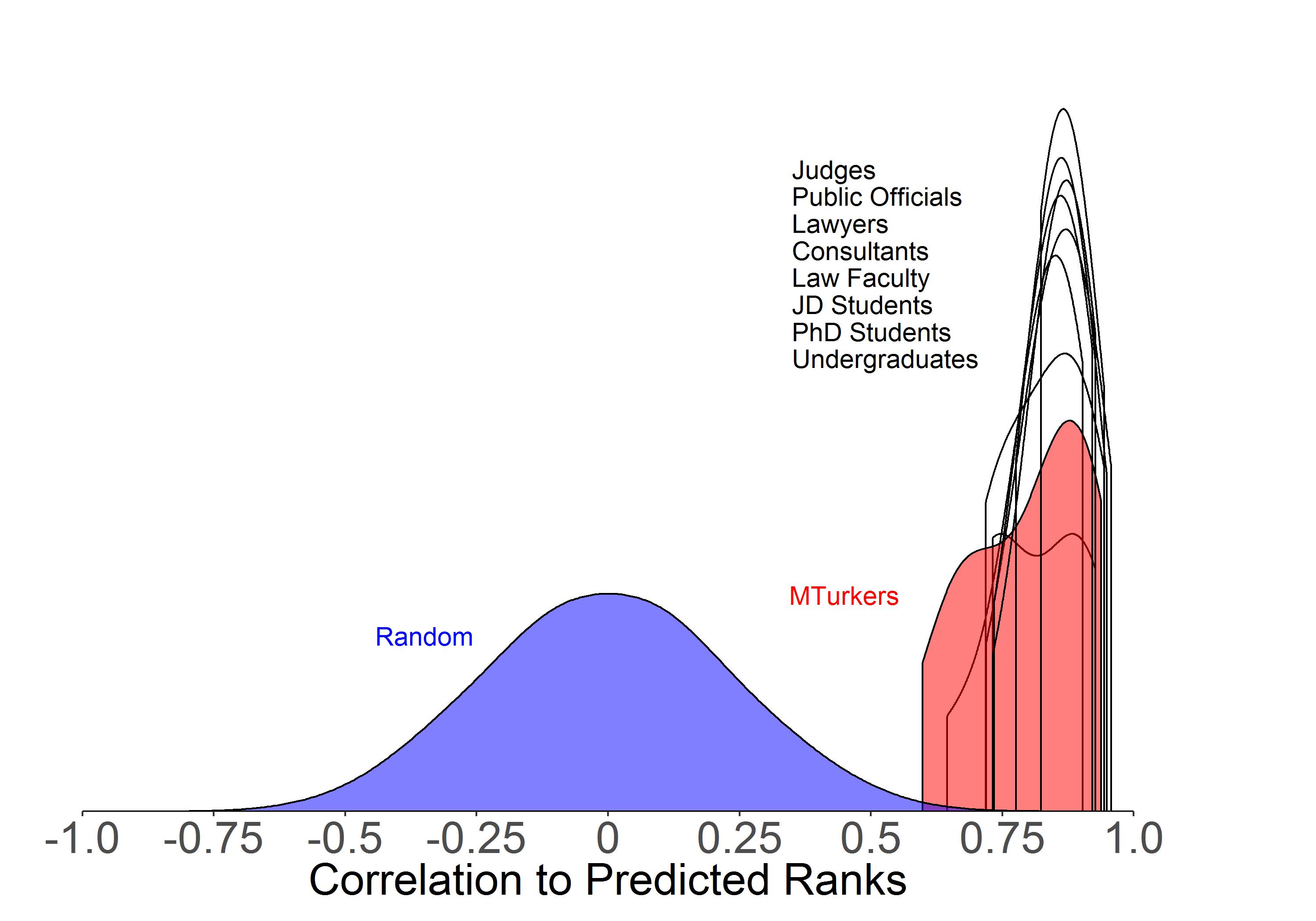Aaron Kaufman, Gary King, and Mayya Komisarchik
Forthcoming at American Journal of Political Science
Abstract: The US Supreme Court, many state constitutions, and numerous judicial opinions require that legislative districts be “compact,” a concept assumed so simple that the only definition given in the law is “you know it when you see it.” Academics, in contrast, have concluded that the concept is so complex that it has multiple theoretical dimensions requiring large numbers of conflicting empirical measures. We hypothesize that both are correct — that the concept is complex and multidimensional, but one particular unidimensional ordering represents a common understanding of compactness in the law and across people. We develop a survey method designed to elicit this understanding with high levels of intracoder and intercoder reliability (even though the standard paired comparison approach fails). We then create a statistical model that predicts, with high accuracy and solely from the geometric features of the district, compactness evaluations by judges and other public officials from many jurisdictions, as well as redistricting consultants and expert witnesses, law professors, law students, graduate students, undergraduates, ordinary citizens, and Mechanical Turk workers. As a companion to this paper, we offer data on compactness from our validated measure for 18,215 US state legislative and congressional districts, as well as software to compute this measure from any district shape. We also discuss what may be the wider applicability of our general methodological approach to measuring important concepts that you only know when you see.
